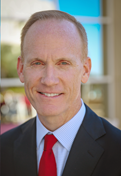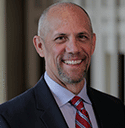Harry S. Dent Jr.'s Blog, page 131
October 26, 2015
Note to Alphabet, Google, Whatever: Pay a Dividend, You Baby
 Note to Alphabet… or Google… or whatever you choose to call yourself these days: it’s time to grow up, wear your big-boy pants, and start paying a dividend.
Note to Alphabet… or Google… or whatever you choose to call yourself these days: it’s time to grow up, wear your big-boy pants, and start paying a dividend.
You’re a $500 billion company, for crying out loud, and your biggest rivals — Apple and Microsoft — are among the most generous dividend payers and dividend raisers in the world. For a company that used to pride itself on its “don’t be evil” motto, your stinginess to your long-suffering shareholders seems a little… well… evil.
Is a dividend really too much to ask? You have consistent and reliable cash flows. And over the past 10 years, your earnings per share have grown at a nice clip with no real interruptions.
Sure, your free cash flow per share, which is the more appropriate measure for gauging cash available to be paid as a dividend, has been a little lumpier as capital expenditures have varied a little from year to year. But overall, you, Alphabet, are a case study in a steadily growing business.
And let’s not forget about your money in the bank. You have $73 billion in cash just sitting around. That’s about 14% of your entire market cap. Seriously, what are you going to spend it on? Driverless cars? Well, that $73 billion is nearly three times the entire market cap of leading auto innovator Tesla Motors. You could buy Tesla outright and still have plenty of cash left over for at least a modest dividend.
October 23, 2015
Health Care: There Has Got to Be a Better Way
 It’s the end of October, which means Halloween is fast approaching. Then, once the calendar flips to November, we jump headlong into the holiday season.
It’s the end of October, which means Halloween is fast approaching. Then, once the calendar flips to November, we jump headlong into the holiday season.
It’s a time of celebration, travel, and gift-giving, but, in recent years, something else was added to the mix, and it fills people with dread.
It’s not more visits from in-laws (although, luckily, mine are fabulous!). It’s open enrollment for health insurance.
Since the Affordable Care Act went into effect, millions of Americans have been driven into a health insurance market that operates on one schedule – open enrollment beginning November 1, to establish coverage for the following year.
While the kinks of the sign-up and renewal process are gone, that doesn’t mean that all the problems are solved. The biggest issue, cost, is still there, haunting people as they wait nervously for the enrollment window to open. When it does, they’ll get their first glimpse of how painful next year will be.
I personally use this system, and my current provider sent me a fabulous letter outlining my options for next year.
The jovial note started with: “Good News!”
It went on to let me know that I could keep my current coverage by doing absolutely nothing. To stay enrolled for 2016, all I had to do was sit on my hands and let it happen. The insurance company would automatically carry me over to the new year, with all the benefits and good times associated with my current level of health insurance.
It wasn’t until page five or six that they got to the heart of the matter.
Yes, they said: I would have to pay a tad more to stay in the club.
For my family, the premium will jump from $1,456 per month to $2,008. That’s a 37.9% increase in one year. This isn’t a platinum plan, or even a gold plan; it’s a middle-of-the-road silver plan. It is a PPO instead of an HMO, but that’s because I’d actually like to see my current doctor.
The 37.9% increase for next year is on top of the more than 30% increase I was hit with last year. I’m having trouble reconciling all the crowing about affordability and bending the cost curve that I hear out of Washington with what’s flowing out of my checkbook.
Since individual conditions aren’t taken into account, our own health doesn’t matter. But for the record, our health expenditures in 2015 are less than half of what we paid in premiums.
What makes the increase particularly galling is how the insurance company presents it. “Good News!” they say, then go on to talk about how wonderful health care is and how much they care.
When you call – and believe me, I’ve called – and ask how the premium can increase by more than 30% two years in a row, the phone rep sounds tired, exasperated, and basically put out.
“It’s a number of factors regarding the cost of providing care to a large group of people in your area.” I’ve asked many times to speak to whomever sets the rates. This always leads to silence.
There’s got to be a person, or even a few people, who decide rates. Computers don’t do this on their own. Someone determines inputs and acceptable outcomes. I want to talk to them. I want someone to look me in the eye and say that it makes sense that I pay $24,096 per year not for health care, but for insurance.
What happens next year? If my premium jumps again, and there’s every reason to believe it will, my annual premium will be almost $30,000. This puts me in the “Cadillac Plan” category, where companies that offer such high-value policies to employees must pay a 40% tax on the cost over $27,500.
Who will the government tax? My insurance company? Me?
I realize the tax isn’t applicable in the individual market. The point is that the threshold of $27,500 was set as a benchmark for exorbitant plans that are overly generous, and yet my middle-of-the-road plan is getting there fast.
There has to be a better way.
There are exceptions to the Affordable Care Act. There are medical cost sharing programs that fall under religious exemptions. They require members to adhere to certain lifestyles and are much less expensive. And they aren’t technically insurance; they’re sharing programs among members. New ones can’t crop up because the law required them to be in existence before January 2000.
These programs remind me of the old mutual benefit societies that were often ethnic associations (Italian, Scottish, etc.). Members contributed to a general fund and then submitted their needs, which were voted on.
It’s possible that something of the sort will resurface. Families will buy the cheapest policy they can to satisfy the law and provide a backstop against a catastrophe, but then also join a group that will collect monthly payments and pay out for routine health care costs.
Of course, doing such a thing would fly in the face of how the Affordable Care Act is structured. There’s a reason my premiums are skyrocketing. The government needs the money to pay for others. If I find a way to bow out of the program, even partially, then I’ll hinder the operation.
I don’t want others to be without care. I’m good with contributing to the cause. But I want it to be reasonable and upfront. Don’t tell me that my health care insurance requires an annual cost of roughly half the median family income in the nation. Tell me how much is for me, and how much is a tax for the system, and then bill it that way.
In the meantime, I’ll be looking for an association that can lower my costs, or a group that’s exempt. I hear the Amish are a welcoming people.

Rodney
Google Wants to Slow Down Aging, But at What Price?
 This year Alphabet (NASDAQ: GOOG), formerly known as Google, has been in a full court press to leverage their massively advanced computing infrastructure to figure out a way to do the unthinkable: slow down human aging!
This year Alphabet (NASDAQ: GOOG), formerly known as Google, has been in a full court press to leverage their massively advanced computing infrastructure to figure out a way to do the unthinkable: slow down human aging!
The irony of this whole effort is that Calico, a biotech spinoff company of Alphabet, is running out of data to crunch. They’re simply having a hard time finding people willing to donate their DNA.
Google Ventures CEO Bill Maris, the man behind Calico, essentially told an interviewer earlier in the week that people should stop whining and
October 22, 2015
So Is This a Bear Market or Not!?
 Jesse Felder’s “Correction Beard” captured the awe of the financial blogosphere this year.
Jesse Felder’s “Correction Beard” captured the awe of the financial blogosphere this year.
If you missed it… the former Bear Stearns banker and hedge fund manager, and current author of
Déjà Vu? Wall Street’s Drawing a Correlation That Might Not Exist
 It’s human nature to try and draw conclusions based on what happened in the past. As they say, history does not repeat but it often rhymes.
It’s human nature to try and draw conclusions based on what happened in the past. As they say, history does not repeat but it often rhymes.
One of the more recent topics flooding my inbox from Wall Street firms is that today – this series of volatile up and down moves, with a rally that stays up – compares to similar patterns in 1998 and 2011. In fact, if you overlay the three charts between 1998, 2011, and where we are today, they do look quite a bit alike.
In 1998 the stock market suffered a drop, then a rally, then another drop, before rallying 15.4% over the next 13 weeks. In 2011 the pattern was similar. After a succession of up and down moves, the market rallied 15.2% over the next 13 weeks.
The question is whether 2015 will look like 1998 and 2011 when the market really pops into the end of the year… or, if this time is different.
I think this time could be different. Here’s why:
The 1998 and 2011 periods had their wind at their backs. In 1998, technology stocks were leading the way. Everyone was excited about the New Economy and IPOs were often up 1,000% from their offering prices in a matter of days or weeks. The stock market was very speculative. Doctors and lawyers were quitting their practices to day trade stocks and pimple-faced kids set up shop as venture capitalists in their dorm rooms!
In 2011, a new period of quantitative easing went into effect at the bottom of the European debt crisis, and the market zoomed higher in the fourth quarter.
But today, the bull market is long in the tooth. Bull markets have averaged 39 months over the last 100 years. This one has plenty of grey hairs at 6 ½ years long.
Very few stocks are leading the way. I pointed out in prior issues that only a handful of stocks accounted for all of 2015’s gains at that point, and 20% of the stocks in the S&P 500 were down 20% or more.
The U.S. market is the second most overvalued developed market in the world based on long-term earnings trends.
The strong U.S. dollar is killing companies. Revenues are falling short of expectations and companies are often beating revenue based strictly on financial engineering. These low quality sources of earnings are what we target in Forensic Investor.
Finally, insiders are cautious. In September, about a third of insider buying was in just one stock. That’s hardly an endorsement from the people inside the company that have the best handle on their prospects.
So I think this time will be different. It’s best to include some insurance in your portfolio to guard against further declines.

October 21, 2015
Zero Percent Inflation: Next Up, Deflation
 During World War II, the Fed bought its own bonds to keep interest rates low and demand high enough to finance the war effort.
During World War II, the Fed bought its own bonds to keep interest rates low and demand high enough to finance the war effort.
Back then, the Fed’s efforts did what you’d expect: they caused a modest level of inflation.
So you’d expect the unprecedented stimulus of today to create substantially higher inflation. In fact, with the greatest money printing in history, it wouldn’t be unreasonable to fear hyperinflation.
That’s what most gold bugs fear.
It’s what most everyone seems to fear.
They’re completely wrong.
Inflation is low… will stay low… and there will be no hyperinflation to speak of.
The money the Fed printed has largely gone into financial speculation. It hasn’t performed any real stimulus efforts by expanding the money supply through lending and spending.
So instead of inflation, we’ve seen bubbles pop up all over the financial markets. And they’re just like the ones we’ve seen before when tech stocks blew up. It was the same with real estate to follow… then emerging markets… then commodities… then gold… then junk bonds… then Treasury bonds.
Those bubbles did nothing to create a stronger future.
Instead, they tempted investors to misallocate resources. So when the bubbles inevitably burst, the system they’d stretched and warped with debt fell apart.
So why are gold bugs’ fears of hyperinflation so misplaced?
Because they’re only looking at the amount of new money being created.
I’ll grant them – current printing is unprecedented. There’s a lot of new money.
But what they’re not considering is the velocity of money.
Dr. Lacy Hunt – the only classical economist I like – explains this when we invite him to speak at our Irrational Economic Summits.
When money velocity is rising, it means the economy is expanding. Production capacity is increasing. Wages rise. Deposits are lent and invested effectively.
Essentially, more money moves around the economy in the places that it should. Late 1978 into 1997 was such a period.
But when money velocity falls, it means investment becomes increasingly speculative. Less money is spent on production and capacity. Workers’ wages stagnate or fall. They spend less. The money flow shifts.
Here’s the chart that Lacy Hunt uses. Notice how the velocity of money rose basically from the end of World War II into 1997. It’s been going negative ever since and is now below its average (the black line in the center). When that happens, it means those bubbles and the debt behind them are starting to deleverage.
The result? Deflation.
Think of it like the circulation of blood. When money velocity rises, blood flows through the veins and arteries smoothly. It feeds our muscles and organs the necessary nutrients and oxygen they need to function optimally.
When money velocity falls, blockages form. The blood pools. Blood clots and strokes become a constant threat.
The last time we saw money velocity drop like a rock was between 1919 and 1929. It went negative in 1930 and stayed in that territory until 1933.
During those three years, bubbles burst left, right, and center. Debt deleveraged at breakneck speeds. We saw deflation, not inflation, even with record low interest rates and Fed stimulus to fight the Great Depression.
It’s happening again today.
The velocity of money has turned lower… and since 2008 and 2009 when we started to see deflation, the Fed and other central banks have declared war, hell bent on wiping out deflation and foregoing debt deleveraging through massive QE.
As of last month, inflation is zero.
Some war!
Pretty soon they’ll run out of steam. They can’t continue to fight the massive debt overhang AND worsening demographic trends. They’re losing the war. Deflation is coming.
So ask yourself: are your investments protected from inflation, or deflation?
Most debt crisis experts have people protected from inflation. The people that followed their recommendations in 2008 got slaughtered.
Don’t resign yourself to the same fate.

Harry
Follow me on Twitter @harrydentjr

Watch the Road! Don’t Trade Against the Dominant, Long-Term Trend
 Every Tuesday, I share with Cycle 9 Alert subscribers my Leaders & Laggards Board.
Every Tuesday, I share with Cycle 9 Alert subscribers my Leaders & Laggards Board.
This ranking system is meant to give readers a general idea of which sectors are on the rise… and which ones are lagging behind.
October 20, 2015
Greece’s Bitcoin Debacle: Lying, Cheating, and Corruption
 On the face of it, Greeks are some of the most industrious people in the world. Almost a third of the work force is self-employed. That’s double the average of other Europeans who strike out on their own, and far above America’s 7%.
On the face of it, Greeks are some of the most industrious people in the world. Almost a third of the work force is self-employed. That’s double the average of other Europeans who strike out on their own, and far above America’s 7%.
But for all of their ambitions and effort, these same Greeks appear to be very bad at money management.
According to their personal income tax filings, on average self-employed Greeks spend 82% of their income on debt service, paying for things like cars and homes.
For comparison, the rule of thumb in the U.S. is that debt service should take up no more than 30% of income. After all, people have to eat, buy gas, pay for clothes, etc.
In Greece, the problem gets worse when we look at individual sectors. Ironically, business owners in accounting and finance manage to spend 115% of their income on debt service, making them the worst money managers in the bunch. Other professionals who spend over 100% of their income on debt work in medicine, lodging, retail, and transportation.
Before you shed a tear for these hard-working souls that can’t seem to get ahead, you should know something: no one believes they’re telling the truth, particularly their banks and the government.
The taxpayers lie to avoid taxes, and the effort to catch them sheds light on why bitcoin won’t survive in its current form.
Like bankers everywhere, Greek bankers have to lend to make money. If they avoided all the self-starters who claim exceptionally low incomes to avoid taxes, then they would miss lucrative sections of the market.
So they did what any reasonable banker would do: they created their own model for estimating a person’s real income based on what they reported to the government.
This approach proved so accurate that a group of academic researchers were able to use the data to determine how much tax revenue these professionals were withholding from the state. In 2009, the number was 11 billion euro, or roughly 12% of Greek tax revenue for the year.
This goes a long way in explaining why Greece focuses so much effort on curbing tax evasion. The practice is driving the country to the poor house.
To combat it, a recent article suggests the government wants to drastically reduce the amount of cash that pensioners and civil servants can withdraw from banks. Instead, they would have to use debit and credit cards to spend.
It’s not that pensioners and civil servants are the ones guilty of tax evasion. The goal is to track funds flowing to service providers, like doctors and restaurants, who are among the worst tax evaders.
Whether true or not, the proposal sounds reasonable. The government simply wants to stop an illegal practice that places a higher burden on those that follow the rules.
But that ignores part of what drove tax evasion to such large levels in the first place. Constituents see the government as corrupt, with government officials demanding bribes before they’ll perform their duties. Even tax enforcement officials had a bribe schedule, highlighting what size of the bribe was required to get a tax liability reduced. In such a system, citizens that don’t evade taxes provide a free ride for all others.
Breaking the cycle requires a transformative change, like forcing most transactions through the banking system where they can be tracked. The government needs to know who has funds and where they are spent.
This is the antithesis of bitcoin, a system that prizes anonymity and ease of transfer around the world without banks or government interference.
The digital currency has become popular in Greece with tax evaders looking for an easy way to remain anonymous, and regular citizens concerned over the state of the country’s currency. If countries allow their citizens to move funds from the banking system to bitcoin, then wealth holders can choose what they report. It would completely undermine the government’s efforts to track the funds it’s losing.
Without transparency through official channels such as the Federal Reserve or the Office of Thrift Supervision – or the ability of the FBI, the IRS, or even local police to review accounts – using bitcoin, individuals and businesses can hide any and all transactions and transfers. This makes tax evasion and illicit activity easy. It doesn’t mean everyone will do it, just that it’s simpler.
But there doesn’t have to be an intent to break the law to make bitcoin tough for the government to swallow.
Another aspect of the Greek proposal is that funds previously withdrawn from banks now remain on their books. This recapitalizes banks using none of the government’s resources, and insures them larger deposit balances. That’s a great deal for banks, particularly if they are at risk of insolvency.
Right now savers can move their wealth to bitcoin at a moment’s notice. If bitcoin gained wide acceptance and banks started to falter, it would make sense for people to move more assets to bitcoin. This would only quicken the demise of banks, creating a self-fulfilling prophecy.
No matter how good this would be for individuals, it’s hard to see how it would be good for the government.
There is a way for bitcoin to counter at least part of these problems – provide records of ownership and transactions to bank regulators.
Of course, this ruins one of the main selling points of the digital currency, and flies in the face of why most owners use bitcoin in the first place.
It sort of reminds me of the old Woody Allen quote: “I’d never join a club that would have me as a member.”

Rodney
How Can Stocks Be So Good When the Economy’s So… Not?
 I really hate to be so negative, but I really don’t get the rally in stocks.
I really hate to be so negative, but I really don’t get the rally in stocks.
October 19, 2015
Trading in Today’s Markets: The Odds Are Stacked Against You
 The popular TV program Person of Interest starts with the phrase: “You are being watched.”
The popular TV program Person of Interest starts with the phrase: “You are being watched.”
A byproduct of this magnificent information age is that governments, companies, hackers, and nearly anyone else can watch you.
No doubt there are benefits to this. When you know your customer, you can improve almost every angle of your business. Service, marketing, communications…
But there are the other parts: the serious violations of privacy, the threats to our very survival, the people who use our information against us.
In the financial world, one of the greatest threats are the large, more sophisticated traders who know what you’ll do before you do it, and have hence learned how to play the system to their advantage.
These are not ordinary investors that position for long-term trends.
These are the guys who play off short-term movements to make fast money while others lose it.
They watch when most people are buying or selling, where they place their stops, and then they do the opposite. In the short term, the markets are more a zero-sum game, so your loss is their gain. They don’t need the markets to go up or down to make money – they just take it from you!
This is the reason so many everyday traders say things like: “I always seem to be the last one to buy before the markets tank, or the last one to sell before it takes off again.”
You sign up for a trading account and get some neat software to track Elliott Wave patterns, Fibonacci retracements, support and resistance levels, moving averages, and so on.
Little do you know, this is child’s play to the big traders. They know what you’re thinking, what your software is telling you, and they use that knowledge against you.
Still, you’re sold. A commercial airs. You open a trading account. You’re going to be your own trader from home. You’re going to beat the pros and retire from your bedroom. Fat chance.
The truth is, almost everything is rigged in their favor.
They have better tools… and more maneuverability.
They employ high-frequency trading with computer servers that are nanoseconds closer to the data, which keeps them a few ticks ahead of you – and even some larger institutional investors.
They have very sophisticated algorithms and software to do this.
Then, most of the action doesn’t even happen when the market’s open. It happens after hours in the futures market that most people can’t trade in.
Before the market even opens next, these more sophisticated traders have already decided where it’s going – usually in the first few minutes of trading.
By the time you react, the move has already happened. Then, typically, the markets tread water for most of the rest of the day.
One of the worst things about this: the Fed’s zero interest rate policies have allowed these guys to lever up much more massively, up to 30 to 50 times, at very low costs.
Normally, they’d account for 10-15% of the volume each day, there to counter the market’s extremes and actually keep it more liquid and orderly.
But now they can account for 50% or more. That means they have more power to create volatility and push against everything you do and assume.
If they see support lower just ahead, they have more resources to bid the market up until all the small traders are scared out and all the stops are hit.
They do the same thing when most traders are too short. They push up the markets, despite the news, until all those short sellers are stopped out.
We just saw the mini crash in late August occur in four short days when least expected. Who do you think was behind that?
Then, since late September, the market has gone straight up for no reason. Why? Simply to shake-out all the short positions.
Trading the markets is like playing poker against God. Except the more you play, you realize you’re actually playing the Devil!
Don’t be naïve and think you can outsmart these highly leveraged, sophisticated, and often malicious traders.
If you want to make money trading in volatile markets like these – that have not and will not reward buy-and-hold strategies for many years to come – find a sophisticated trader to be on your side: someone who has a proven system, someone who is doing something the big traders aren’t…




